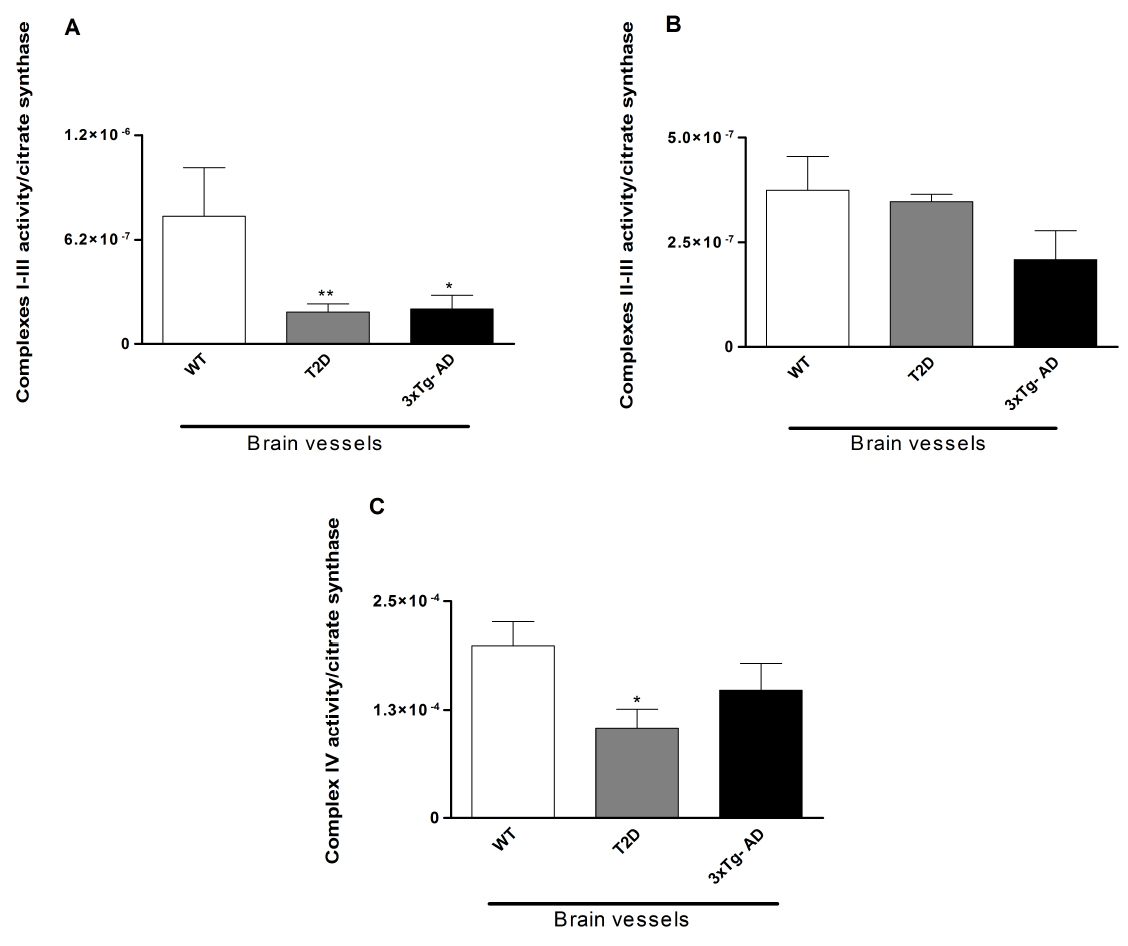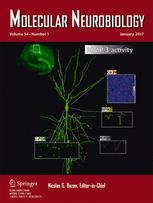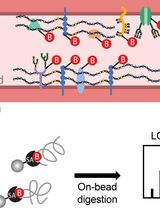- EN - English
- CN - 中文
Isolation of Rodent Brain Vessels
啮齿动物脑血管分离
发布: 2017年09月05日第7卷第17期 DOI: 10.21769/BioProtoc.2535 浏览次数: 9349
评审: Pasquale PellegriniAnonymous reviewer(s)
Abstract
The prevalence of neurodegenerative diseases is increasing worldwide. Cerebrovascular disorders and/or conditions known to affect brain vasculature, such as diabetes, are well-known risk factors for neurodegenerative diseases. Thus, the evaluation of the brain vasculature is of great importance to better understand the mechanisms underlying brain damage. We established a protocol for the isolation of brain vessels from rodents. This is a simple, non-enzymatic isolation protocol that allows us to perform comparative studies in different animal models of disease, helping understand the impact of several pathological conditions on brain vasculature and how those alterations predispose to neurodegenerative conditions.
Keywords: Blood-brain barrier (血脑屏障)Background
The brain is highly dependent on a constant supply of oxygen and nutrients that arrive through a vast network of blood vessels. The blood-brain barrier (BBB), mainly composed of microvascular endothelial cells that line cerebral microvessels along with periendothelial structures, which include pericytes, astrocytes and a basement membrane (Saraiva et al., 2016; Librizzi et al., 2017), guarantees the control of an homeostatic environment, necessary to maintain the health of brain cells. Thus, the study of how certain pathologies that can interfere with the integrity of cerebrovasculature is of great importance. Indeed, strong evidence from clinical, imaging, epidemiological and neuropathological studies confirmed over the past two decades that the presence of cerebrovascular disease has a pivotal role in Alzheimer disease (AD) and other dementias associated with aging (Chui et al., 2006; Schneider et al., 2007; Gorelick et al., 2011; Wharton et al., 2011; Yarchoan et al., 2012; Bennett et al., 2013; DeCarli, 2013; Toledo et al., 2013; Yates et al., 2014). Besides the low number of papers dedicated to the study of isolated brain vessels, the isolation protocols used in those studies present some inconsistencies rendering difficult the comparison and interpretation of the published observations. With this protocol, we intend to offer a standardized procedure to help researchers working in this field. This protocol was adapted from a previous protocol described by McNeill et al. (1999) and used in our laboratory to isolate total (arterial and venous) brain vessels from rodents (Figures 1 and 4) (Carvalho et al., 2010; Carvalho et al., 2013; Plácido et al., 2017).
Figure 1. Evaluation of the activity of the mitochondrial enzymatic complexes of mice brain vessels. Mitochondrial complexes I-III (A), II-III (B) and IV (C) were determined in vessels isolated from the brains of 11-month-old male wild type (WT; C57BL6/129S), type 2 diabetes-like mice (WT mice exposed to 20% sucrose solution during 7 months) and triple transgenic mice for Alzheimer disease (3xTg-AD, B6;129-Psen1 Tg(APPSwe,tauP301L)1Lfa/Mmjax). A significant decrease in the activity of mitochondrial complexes I-III was observed in brain vessels isolated from 3xTg-AD and type 2 diabetes-like mice. Also, a significant decrease in the activity of complex IV was observed in brain vessels isolated from 3xTg-AD mice. Data shown represent mean ± SEM from 6-8 pools of n = 3. Statistical significance: *P < 0.05; **P < 0.01 when compared with WT mice. Statistical significance was determined using the paired Student’s t-test and Kruskal-Wallis test for multiple comparisons, followed by the posthoc Dunn test (GraphPad Prism 5). These graphs have been previously published in Journal of Alzheimer’s Disease (DOI: 10.3233/JAD-130005) with permission from IOS Press.
Materials and Reagents
- 50 ml Oak Ridge polysulfone centrifuge tubes w/screw caps (Thermo Fisher Scientific, catalog number: 3115-0050 )
- Eppendorf microtubes 1.5 ml (VWR, catalog number: 700-5239 )
- PIPETMAN TIPS Diamond–ECOPACKTM D1000 (Gilson, catalog number: F161670 )
- PIPETMAN TIPS Diamond–ECOPACKTM D200 (Gilson, Catalog number: F161930 )
- PIPETMAN TIPS Diamond–ECOPACKTM D10 (Gilson, catalog number: F161630 )
- Stainless steel surgical blades (Swann Morton, catalog number: 0308 )
- Rodent brain
Note: This protocol has only been tested with brains from male young and mature (3- and 12-month-old) Wistar rats and wild type, type 2 diabetes-like and triple transgenic for Alzheimer disease (3xTg-AD) mice (11-month-old). Nevertheless, we believe that this protocol can be applied to different strains, ages and sex, though the amount of obtained sample can be a limiting factor. - Ice
- Distilled water
- Isoflurane (Lab. Vitória, Portugal)
- Sodium chloride (NaCl) (Sigma-Aldrich, catalog number: S7653 )
- Sodium phosphate dibasic (Na2HPO4) (Sigma-Aldrich, catalog number: S7907 )
- Dextran from Leuconostoc mesenteroides (Sigma-Aldrich, catalog number: 31398 )
- Phosphate buffer (0.01 M) (see Recipes)
- Dextran (16%) (see Recipes)
Equipment
- 50 ml FisherbrandTM reusable glass low-form Griffin beakers (Fisher Scientific, catalog number: FB10050 )
- Bone cutting forceps (Aesculap, catalog number: FO611R )
- Centrifuge (Refrigerated Centrifuge) (Sigma Laborzentrifugen, model: SIGMA 3-16K )
- Curved fine tip forceps (Aesculap, catalog number: FB401R )
- Heidolph mechanical overhead stirrers, Brinkmann (Heidolph Instruments, model: RZR 1 )
- Laboratory bottles, narrow mouth, with screw cap (VWR, catalog number: 215-1594 )
- Micropipette PIPETMAN L (Light) type P200L (Gilson, catalog number: FA10005 )
- Micropipette PIPETMAN L (Light) type P1000L (Gilson, catalog number: FA10006 )
- Nickel/SS Lab spatulas with 1.63” Flat Rounded Ends (Cole-Parmer, catalog number: EW-06369-05 )
- Petri dish with cover 60 x 15 mm (Corning, catalog number: 70165-60 )
- Potter-Elvehjem with PTFE pestle and glass tube (DWK Life Sciences, Kimble®, catalog number: 886000-0023 )
- Precision scale (Mettler-Toledo International, model: AE240 )
- Precision balance PLE-N (KERN, model: PLE-N )
- Scalpel handle (Aesculap, catalog number: BB084R stainless)
- Soft hair brush, 3 mm dia. (CONTROLS, catalog number: 86-D1672 )
- Swing-out rotor (Sigma Laborzentrifugen, catalog number: 11133 )
Procedure
文章信息
版权信息
© 2017 The Authors; exclusive licensee Bio-protocol LLC.
如何引用
Carvalho, C. I. and I. Moreira, P. (2017). Isolation of Rodent Brain Vessels. Bio-protocol 7(17): e2535. DOI: 10.21769/BioProtoc.2535.
分类
神经科学 > 神经系统疾病 > 血脑屏障
细胞生物学 > 组织分析 > 组织分离
您对这篇实验方法有问题吗?
在此处发布您的问题,我们将邀请本文作者来回答。同时,我们会将您的问题发布到Bio-protocol Exchange,以便寻求社区成员的帮助。
Share
Bluesky
X
Copy link












